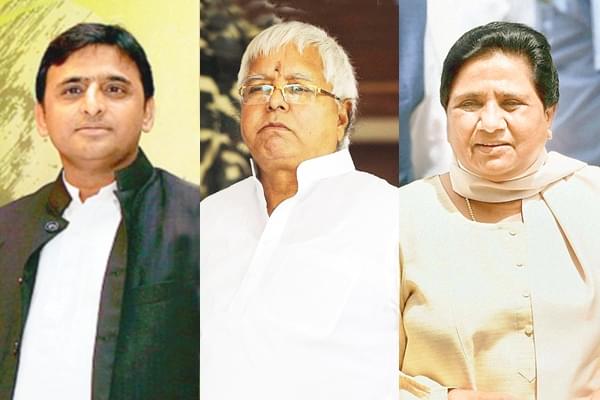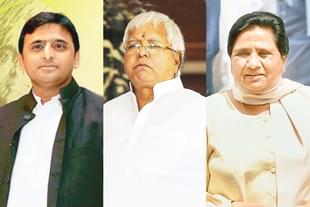Politics
Lalu’s Bid To Bring Mayawati And Akhilesh Yadav Together Is Bound To Fail
Atul Chandra
Jun 07, 2017, 03:12 PM | Updated 03:12 PM IST
Save & read from anywhere!
Bookmark stories for easy access on any device or the Swarajya app.


In early March 2017, Samajwadi Party (SP) president Akhilesh Yadav said that he was ready to align with the Bahujan Samaj Party (BSP) to stop President’s rule being imposed on Uttar Pradesh.
In the backdrop of the State Guest House case of 1995 in which the SP goons molested the BSP chief Mayawati, the statement was stunning.
Ever since that incident in which Mayawati was saved by Bharatiya Janata Party’s late leader, Brahm Dutt Dwivedi, the BSP president has treated Mulayam Singh Yadav, who was an accused in the case, as her arch enemy.
Although politics is known for occasional strange bedfellows, the coming together of the two regional parties began to be considered as impossible.
Akhilesh’s March statement came just two days before the counting of votes and when pollsters were predicting a fractured mandate. The former UP chief minister told the BBC that he was open to an alliance with the BSP as no one wanted President’s rule in the state.
Mayawati who, like Akhilesh, was then confident of forming a government on her own turned down the offer.
In 2014, Rashtriya Janata Dal president Lalu Prasad Yadav also tried to bring SP-BSP together to fight the BJP. Even at that time Mayawati rejected Lalu’s proposal to form an alliance with the SP to stop the BJP from coming to power.
Lalu is again trying to play the match-maker. Akhilesh has confirmed his participation in a proposed rally in August. He even said that Mayawati too would be attending the rally, although there is no confirmation from the BSP chief yet.
“I will be present at Lalu Prasadji’s Bihar rally on August 27 and Mayawati will also be there. If there is any announcement (about future alliance) it will be made there,” reported a news agency from Mainpuri.
This time around Mayawati may not be able to say an emphatic no to an alliance with the party she has long detested as her Rajya Sabha term comes to an end in April next year.
After the drubbing her party received in the assembly elections, BSP could win only 19 seats in one of its worst performances, Bihar could be Mayawati’s only route to the Upper House courtesy Lalu.
Six Rajya Sabha seats will fall vacant in Bihar and two of these will be with the RJD.
There were reports that Mayawati had approached Lalu with the request for support in her Rajya Sabha bid. Since the BSP has no representation in the Lok Sabha, it would be a desperate situation for Behenji, as Mayawati is called.
If Lalu indeed agrees to provide a passage to Mayawati it would not be without extracting his pound of flesh in the form of SP-BSP patch up for an umbrella alliance of the opposition parties.
Will it help either of the two parties in 2019? A SP spokesman was not too sure. “Look what happened after the party allied with the Congress for the assembly elections, he asked and answered the question himself, “SP’s tally fell drastically”.
There was confusion in SP-Congress alliance as in at least two seats – Amethi and Lucknow, where they had agreed not to put up candidates against one another – the compromise formula did not work. While Congress did not withdraw its candidate against SP’s Ravidas Mehrotra, Gayatri Prasad Prajapati (SP) remained in contest against Congress’s Ameeta Singh. With three parties coming together, seat distribution could get even more complicated.
The Dalit-Backward combination, with Muslim support thrown in, could have posed a challenge to the BJP but not when the ruling party has made deep inroads in the two vote banks. The BSP vote share of 22.2 per cent indicates that only its Jatav support base is more or less intact, while the SP’s 21.8 per cent goes to show polarisation of non-Yadav OBCs and the most backward classes voters in favour of the BJP.
The situation, as of now, is unlikely to change in Uttar Pradesh in 2019 for either the SP or BSP as both have been considerably weakened by infighting and defections respectively.
Atul Chandra is former Resident Editor, The Times of India, Lucknow. He has written extensively on politics in Uttar Pradesh.





